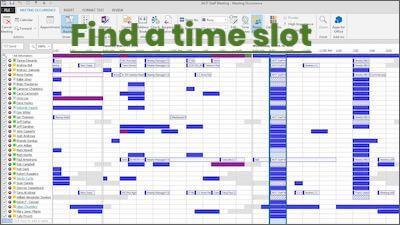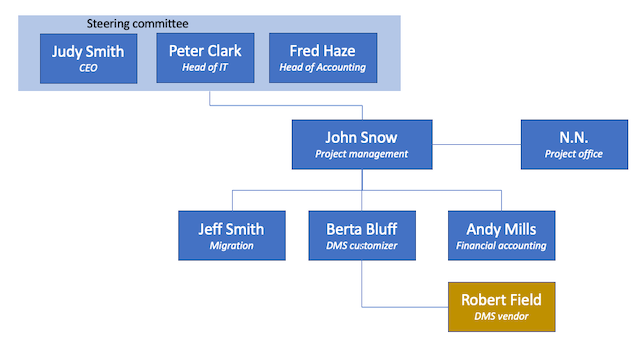Have you done most of the groundwork for your project? Now you’re thinking about the kickoff?
Good preparation will pay off!
No meeting has a bigger impact on a project’s success than the kickoff meeting. Getting it right can save you from many common challenges that often come up in larger projects.
In my 10 years of project management, I’ve run dozens of kickoffs, and I’ve seen firsthand how clear and honest communication from the start leads to better collaboration and fewer headaches down the road. As project leaders, that’s what we should aim for.
This article will help you run a great kickoff. I’ll guide you through the entire process — from identifying participants and creating a slide deck to running the kickoff!
Key Takeaways
- The project kickoff is where the project team gets a detailed overview of the project so everyone clearly understand their job and deadlines.
- The kickoff takes place once a clear action plan has been defined, necessary resources secured and the project is approved.
- The project manager should focus on clearly explaining the approach and timeline as well as reinforcing people’s responsibilities.
- Every project contributor and all key stakeholders should be attending the kickoff. Leadership presence helps to underscore the significance of the project.
What is a Project Kickoff?
The project kickoff is a meeting where the project team is familiarized with the project specifics, including the timeline, responsibilities and logistics.
It’s hosted by the project manager who leads through the meeting. The kickoff marks the official start of a project, concluding a usually intense preparation phase, filled with endless discussions and negotiation over resources.

The purpose of the kickoff? It’s to equip the team and stakeholders with the necessary details on the project to ensure a smooth collaboration.
Also, people need to know the timing of work so they can schedule other duties and personal off-time. Think of a kickoff as a pre-flight briefing given to crews before a flight.
You may have read about different types of kickoffs. What’s the deal here?
Sometimes pre-kickoffs are held at earlier project stages, with the purpose of getting to meet each other face-to-face and building that initial level of trust that will lead to better collaboration down the road. There will always be an actual kickoff later when project planning has been concluded.
In other cases, kickoffs may be broken into an internal kickoff with the own team and a separate one with the client team. The reason for this is purely organizational – getting so many people together for one meeting is almost impossible.
Based on my experience, it’s always better to have one big kickoff involving all contributors and stakeholders instead of separate ones. You only have to do your “show” just once but do it really well. You also have to address people’s questions only once. With separate meetings, the challenge is ensuring consistency in communication.
Why the Kickoff Is So Critical
For a project to be successful, it requires the dedicated and focused support of the people involved. This support doesn’t just happen on its own.
We must clearly communicate our expectations — what we expect and when we expect it. If we don’t manage to do that, the project will be an endless struggle and we won’t be able to achieve the project’s target.
The kickoff is this single moment to share our plan and get everyone on the same page. It’s the meeting where we prepare the team for the upcoming challenges so that everybody knows exactly what to do.
It’s a one-time opportunity, because once the project is in full motion, course corrections are much harder to make (practically almost impossible, as people are again busy with their other work). This is the informational aspect of a project kickoff.
The kickoff also serves a motivational goal.
We want the team to be fully invested in the project and foster a sense of responsibility towards our common goal, as the overall outcome mainly depends on the performance of each individual.
Keep in mind also that as project leaders, we usually don’t have formal control over our team. Unlike their supervisors, we cannot enforce action. Thus, our only possibility to drive action is through motivation (getting people excited and invested).
Who Attends A Project Kickoff?
The following people should attend the kickoff:
- The Project Manager
- The project team
- Major stakeholders
- Leadership from both customer (sponsor) and contractor. By contractor I’m referring to the party that is hired to do the actual project work.
No need to explain why the project manager should attend. He’s the one who leads through the meeting. Then there’s the project team, which are staff members who are doing the actual project work.
Key stakeholders could be representatives from areas or departments that are either strongly impacted by the project or whose expertise has major influence on the project’s success
(If you are not sure how to find out who your stakeholders are, I strongly encourage you to read my article on stakeholder analysis).
Examples of important stakeholders could be: Legal if your project touches legal issues. It could also be Purchasing in case you’re buying expensive goods as part of the project. It could also be HR if the project has major influence on employees, e.g. if time tracking is introduced.
Next, let’s explore how a kickoff is conducted in the real world.
How does a kickoff meeting typically go?
The cycle of a project kickoff including preparation and the meeting itself can span across several weeks or even months. It all depends on the size of the project.
Here’s the process for preparing and running a kick off:
- Scheduling the meeting – usually several weeks or even months in advance
- Preparing the meeting – creating the slides
- Conducting the meeting – you are the showmaster
- After the meeting – sharing the presentation with your audience
Schedule the meeting
Large meetings with many participants are always hard to schedule. There are always scheduling conflicts because people have so much on their calendar. That’s why I always schedule the kickoff meeting way ahread of time, like months in advance. This way I can block a slot in everybody’s calendar and I can reserve a suitably sized conference room.
Sent out the meeting invite several weeks or even months before the kickoff date.

All you need to do is send out an Outlook invite with some text like:
‘Hi all, this is the invitation to our project kickoff meeting. Please block this time on your calendar. Attendance is mandatory. The agenda will follow. Regards, John (project manager)’.
How long should the kick off be? Normally a kick off takes between 1.5 and 2 hours. This number may vary depending on the size of the project and the need for discussions at the end.
What if some folks decline your meeting invitation? Well, you have to accept that some people just don’t have time. They may either be traveling or on vacation. If people have a strong reason why they can’t join, I will schedule a separate mini-kickoff with them to go through the agenda. I want to make sure they still get the same information as the rest of the team.
Video: How to use the Outlook Scheduling Assistant
The Scheduling Assistant helps you find a time slot that works for most people.
Prepare the meeting
Before you can prepare the kickoff, you need to have your project properly planned and documented. Specifically, you need to have an agreed project goal, a presentable project timeline and a chart showing the project organization.
If you don’t have those documents ready, finish this step first. For many of these documents you’ll find templates on the Internet. Also read my article on defining a project goal. For the timeline, download this project plan template.
Once you got the basic documents complete, it’s time to create the agenda:
Project Kickoff Agenda
Every kickoff has more or less the same agenda. Here’s a good template:
- Introduction – introduce yourself and the team (15 mins)
- Project goal and background – why was the project started? (20 mins)
- Project scope – what are you going to deliver? (20 mins)
- Project organization – who is going to be involved? (10 mins)
- Timeline – explain your approach on the timeline (20 mins)
- Roles and responsibilities – what are the roles and duties of the team members? (20 mins)
- Teamwork and organizational topics – how is the team going to work together? (10 mins)
- Next steps – what are the next activities on the timeline? (10 mins)
- Q & A – answer questions of the attendees (15 mins)
Preparing the PowerPoint presentation
Next, you have to prepare the PowerPoint slides using the agenda as a basis. I can’t tell you exactly how may slides you should include for each agenda point. Be careful with not overloading people with too much information. Better keep your slides concise and simple without going too much into the details.
People mainly want to know how the project impacts their work, what they have to do, when they are going to be involved, whether they can take their summer vacation etc. On the other hand you want to convey as clearly as possible what you expect from the team. So, create your content around those topics and you will do pretty well.
Here are some tips on what to cover in each section:
1) Project goal and background
Explain why the project was initiated and what it’s supposed to deliver. You may have to dive a bit into history and give context so that people fully understand the project goal. Here are some topics worth talking about, depending on your project:
Organization and business model: Not everybody will be familiar with the organization and its business model. So it’s interesting for people to hear where the company is coming from, where it has offices, what its customers are and how it is making money.
Project history: Explain what attempts were made in the past to tackle the issue your project is concerned with. Learning from past failures is always helpful. And it’s probably a good idea to clarify what you’re doing differently to avoid project failure 🙂
Urgency: A common objection to projects is: Why do we have to do this now? Why can’t this project wait til next year? Share the reasons why postponing is not an option and why it has to be done now when everybody is so busy.
Project goal: Of course you need to talk about the actual goal. What does the company expect from this project? And what other objectives does the sponsor hope to achieve as a side effect: financial objectives, sales goals, cost savings and more.
2) Project scope
Next you should talk about the project’s scope.
Project scope is the sum of things a project is going to take care of. This includes project-related tasks (e.g. write a piece of software), specific deliverables (e.g. a training plan) and defined outcomes (e.g. all staff is trained).
For the purpose of a kickoff meeting, you only need to give a high-level overview of the scope. This can be one or two slides with five bullet points each. How do you know what to write about? Think of the major parts your project is delivering. In a construction project this would be setting up a building, doing the plumbing and electrical wiring and so on. This would be the scope. Similarly you list the key scope in the kickoff slides.
At the same time you should list those things that are not in scope. Maybe you set up the building but the client wants to do the flooring and tiling by himself. Or you leave out the lighting setup. So, that would be ‘out of scope‘, as we say in project management. The reason why you should mention what is not in scope is you don’t want people to have wrong expectations. This will only backfire later on when somebody asks you ‘Why isn’t the lighting installed?’ and you say ‘Oh, didn’t we agree this was not in scope?’.
3) Project organization
In this section you give people an overview of the project team. Who is involved? What departments are on board? Who’s overseeing the project from a management level? These are the kinds of question people have. In the end, people want to know who they have to contact regarding a specific issue. The organizational overview provides the answer.
This can be one slide that shows the project org chart:

Like this template? Click here to see all templates
Generally org charts are a bit more complex than this one, but you get the idea.
4) Timeline
This is the slide that people care about most. Why? First, it gives an idea about how intense the work is going to be. The more work is squeezed into the timeline, the higher the workload. Second, people are keen to see the timeline because they get an idea of how the project impacts their professional and personal schedule.
Some people have planned a long summer vacation. And now your project jeopardizes their plans. Or maybe they have planned business trips and therefore won’t be available to full extent.
Go through the timeline from now til the end and explain the major activities and how they tie together. Also mention any special circumstances that were taken into consideration for the planning. These could be parallel projects, resource gaps, weather conditions or other external factors.
5) Roles and responsibilities
This is THE MOST IMPORTANT set of slides in your whole presentation. Let me explain why.
Here you tell people what you expect from them. What kind of work they have to do, but also how they’re supposed to work together as a team. If this point does not come across and does not fully settle in the minds of your team members, then you will face issues with delegation. People won’t be clear about where their responsibility begins and where it ends. They won’t know what team they have to work with etc. And in the end you’ll be the one sorting out the issues.
That’s why you should take as much time as needed to go through roles and responsibilities. I have a separate article about project roles and responsibilities in case you don’t know what I’m talking about.
6) Teamwork and organizational topics
On this slide you talk about the modalities of collaboration of the project team. This includes the meeting structure, that is how often the team is going to meet both onsite or remotely. In the same context, people may want to know whether they have to come to the office every day or if they can work from home.
Other stuff worth mentioning is where people can find and store project documentation (e.g. in a shared drive), files they have to maintain such as an availability overview and so on. Also, if the project involves traveling, you may want to talk about upcoming business trips and travel regulations or visa requirements.
7) Next steps
The final slide in your project kickoff presentation should highlight the next steps: What are we working starting tomorrow or next week. This is good because that way you can keep the momentum that comes with launching a new project. At the start everybody is still motivated and you want to use this energy to get the first work done. Just have one slide with maybe 4 or 5 bullet points indicating what the team is working on next.
The actual meeting
It’s the big day! You may be a bit nervous before the kickoff but that’s totally normal. Make sure you check if the conference room is ready so you can start the meeting right away. Check if the A/V equipment and beamer are working fine. If you have people joining by phone, dial in a few minutes before to see if the connection is working.
Once you start the meeting, don’t jump right into the hard facts. Instead, give people a warm welcome and tell a funny story or a joke. You want people to relax and open up so that the kickoff becomes a positive and exciting experience for them.

Then, for the next 1 to 1.5 hours all you do is go through the slides. Present your information in an engaging way and always keep eye contact with your audience. You want to see if people are still with you or if you’ve lost them. Make pauses and ask ‘Are there any questions so far?’ You are presenting super important information, so you want to make sure everybody understands what you have to say.
The thing is, people are reluctant to ask questions or state their concerns in a group setting. They are afraid of looking stupid and skip their questions even though something might be unclear. Keep that in mind. What I do is say things like ‘It’s very important that you understand this, so just ask if anything is unclear. I’m happy to answer all your questions.’
Towards the end of the meeting, you start the Q & A session. This is where the team can ask whatever questions they have. It can take anywhere from 10 minutes to one hour. And it’s important to give people this opportunity, because it creates trust and you get the buy-in that’s vital for a successful project.
When there are no more questions you close the meeting. Thank everyone for attending and express your gratitude of working with such a great, high-performing team.
That’s it. Congratulations on your first kickoff!
After the kickoff
There are also a couple of things you need to take care of after the meeting. If you’ve had somebody write the minutes (which is good but not really needed for a kickoff), you need to check those before sending them out. The other, more important step is to share the meeting presentation with all attendees — and also with the people who could not attend.
I also make a comment in my email that anyone who’s got questions should contact me. As I wrote before, people generally feel uncomfortable asking questions in a group. So you can clarify their concerns or questions in a separate 1:1 meeting afterwards.
How to Make Your Kickoff a Success? Watch My Five Top Tips
Project Kickoff Template
You don’t need to create your slides from scratch. I have a simple template for you which you can download here in PPT format. It already has the agenda structure I’ve used in this article! Check out my project kickoff template.
Learn from the best! These senior project managers share their best tips on running project kickoffs
I reached out to some of my friends on LinkedIn who are project managers. And I asked for their best advice on doing kickoffs. Read here what they shared with me.
Megan O’Malley, Senior Project Manager (PMP) from Ohio

«My advice would be, after the charter is signed, review the list of functions involved in the project. Go to each functional leader, go over the project charter and requirements and any customer dates or budget information. Ask them who can be included on the project team. This is one of the ways I obtain buy-in from the cross functions and it is a good opportunity to find out any pending issues / questions from stakeholders.
Prior to a kick-off, if the project has a time constraint, try to build out a timeline using analogous information from previous projects. The Project Manager will need to start building out the work breakdown structure (WBS) and activity list so using archived / analogous project information, make the WBS. Talk to the team member individually and go over the project with them. Go over the WBS, list of activities. Get buy-in on the task duration / get feedback. Talk about possible risks. Typically, projects I work on have time commitments. This is why I seem to stress time so much.
By the time the kick-off meeting starts, the project is not a surprise. I find that if you surprise people, they get defensive and feel blind-sided, which is not good.
If you surprise people [with your project], they get defensive and feel blind-sided, which is not good.
For the kick-off, go over the agenda a few days in advance. Do a dry-run if necessary. Depending on the project, be prepared for “issues”. There might be stakeholders / team members who are not supportive. Keeping to the agenda, parking issues in a parking lot or the issue log will help keep the kick-off on a positive start. Being as confident as possible will help keep you on task to lead the team.
Being as confident as possible will help keep you on task to lead the team.
At the kick-off, review the project and high-level requirements. Give access to the project folder. Talk about risks that might come up. Review previous project’s lessons learned. Go over the list of activities. You might find something was missed in the work breakdown. Make sure everything is accounted for in the project plan.»
Guy Coulson, senior project manager from South Africa

See how Guy handles his project team kickoffs:
«I have an agenda – although I keep the meeting light and informal. I make the introductions using first names. I explain my management style: open communicative, participative and sometimes I will micro manage depending on the criticality and consequences. For example, if there is a chance of dropping a $100 million into the sea then I want to see the rigging study.
I explain the scope and purpose of the project and the predicted time lines – but projects being dynamic and evolving – client wants a red hat, then the client wants a red hat with bells on – this too is not cast in stone.
I have an organogram -My wheel where roles and responsibilities are set out – these are not cast in stone because I don’t want islands in my team. I ask each member of the team to say who they are, what they do and how they see themselves in the project.
If you let people decide what or how they want something, it often brings better results than dictating how it must happen.
I explain the channels of communication, but I ask the team to say what they expect with regards to the same (if you let people decide what or how they want something it often brings better results than dictating how it must happen – within the boundaries of reality ). I explain who the client is and I detail the subcontractors and who the vendors are»
Roy Macaraig – Project Manager Digital Transformation
« 1. Participant list – think of this like it was your wedding guest list! Be sure it’s complete and ensure the attendance of key participants
2. Is your project management plan ready? The kick-off is the alignment of the project management plan to the rest of the team. Let’s face it that no one will spend time to read the Word document that stipulates how you will run the project. The kickoff is the opportunity to share your plan. A well written project management plan can lead to a successful kick-off
3. Not common practice, but each phase that requires some process-understanding also deserves a kick-off. How is one to raise issues? How is a test step handed over to the next department? Kick-offs are not limited to the first general-assembly type meeting.»
Do you have any further questions?
Now you’ve read a lot about project kickoffs and how to run them successfully. Is there anything this article didn’t clarify that you want to know? Just connect with me on LinkedIn and let me know your question.
Author
-
Hi, I’m Adrian, a Senior Project Manager and the Creator of Tactical Project Manager, where I teach a pragmatic approach to project management. Led large-scale IT and business projects for over 10 years. My goal is to enable you to lead any project with confidence.
View all posts




